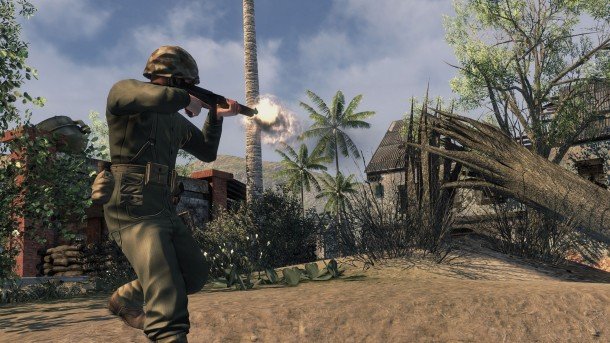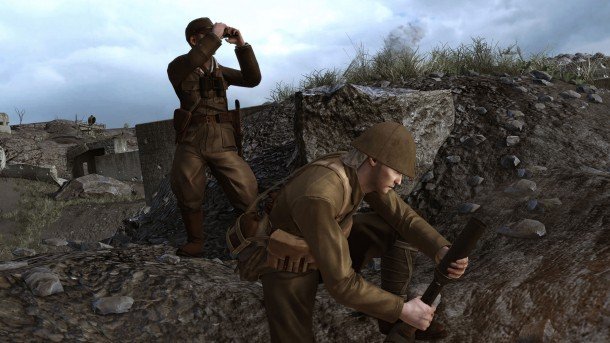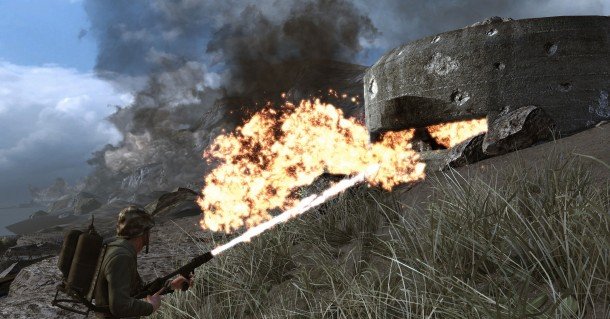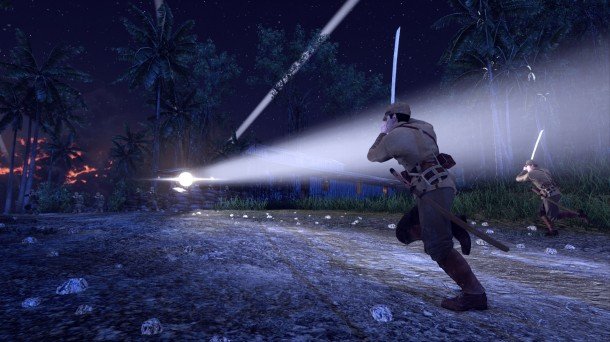Rising Storm hands-on preview

You usually don't get a second opportunity to make a first impression. When Red Orchestra 2 released in 2011, it was an authentic, ambitious, 64-player WWII shooter burdened by bugs and a few unpolished features. Tripwire's self-imposed rush to beat Battlefield 3 out the gate roughed the edges of an otherwise brilliant FPS.
The Georgia-based indie studio patched the issues over time, eventually releasing a free “ Game of the Year ” edition that included new Action and Classic modes that catered to casual and hardcore players. But throughout 2012, Tripwire was also collaborating with a team of talented modders on Rising Storm , the standalone expansion that represents Red Orchestra 2's second coming.
"The overlap of precision, authenticity, and thick danger is still the most rewarding aspect of Red Orchestra."
Rising Storm isn't simply RO2 recast into the Pacific. “We have something started and created by a mod team, but polished to perfection by a group of professional developers,” says John Gibson, Tripwire's president. What's immediately impressive about the expansion is the way it embraces the asymmetries inherent to the American and Japanese infantry at the end of the war. It's a seemingly uncrackable balancing problem, for example, that the Japanese mainly used bolt-action rifles while Americans carried the semi-automatic M1 Carbine and Garand, the Thompson, and the fully automatic BAR.
A counterweight Tripwire has applied against this is making Japanese soldiers harder to suppress, a trait chalked up to their willingness to die for the emperor. More tangibly, the islanders get bayonets and a Banzai charge attack—a sprinting move that mitigates damage and suppresses nearby Americans. Both of these effects improve in radius and intensity when used in unison with teammates.

Some members of the Japanese team can also carry the knee mortar, a portable artillery. “There's nothing the Americans can do other than run when they hear that whistling sound,” says Gibson. “So it helps balance out the Americans' overwhelming ability to put bullets down range.” My first encounter with it is on Iwo Jima, where a crack member of Tripwire's QA team fires it horizontally off the hill like a cannon, dialing me in from a hundred meters. The shell punts into my gut, an impossibly accurate shot from an indirect weapon. I wheel back on my chair, laughing and raising my hands helplessly.
Red Orchestra 2 continues to be a demanding game. Away from grey Stalingrad, neck-deep in island vegetation, it's still a shooter that insists you use your eyes, ears, and intuition to stay alive. Acing an American with the bolt-action Type 38 or Type 99 is instant self esteem. The famous pling of a spent M1 Garand clip signals that a GI's run out of ammo—but incredibly, the Americans can fake the sound by pressing a key, a tactic that was actually employed in WWII.
This overlap of precision, authenticity, and thick danger is still the most rewarding aspect of Red Orchestra. But as I keep playing, there are more moments of relaxed mayhem than I experienced in Heroes of Stalingrad—like taking a mortar directly to the liver. I fill my team's flamethower soldier slot on a tough round on Guadalcanal. Under the blue-purple skybox, I curl around a bamboo hut and lock eyes with a Japanese rifleman inches away. My mouse hand flinches, his skin goes molten, and I giggle as a lengthy death animation plays out.
The biggest gaming news, reviews and hardware deals
Keep up to date with the most important stories and the best deals, as picked by the PC Gamer team.

"Any burp of fire is a bright invitation to the Japanese to shoot you from across the battlefield."
Later in the round, I arrive too late to a capture point that's just been flipped by the Japanese. I linger lost outside the thatched, single-floor command structure. Some instinct rings inside me, and I flick a rope of heat through the window out of a need to uncork this hot potato of a weapon I'm running around with. Seconds later, four kill notifications with my name on them stack up.
Letting a messy, powerful weapon like a flamethrower into a gritty game of inches like RO2 might seem like inviting a dragon to a war reenactment, so it's remarkable that Tripwire has balanced the thing while making it so absurdly fun. You're heavy as hell, only have seven seconds of burn time before you have to refuel, and any burp of fire is a bright invitation to the Japanese to shoot you from across the battlefield.
The good design of these incongruous features is in part thanks to Elliot Cannon , an ex-Epic, ex-Crytek, veteran FPS designer that joined Tripwire in May 2012. Gibson pursued Cannon after learning that he was the author of his favorite Unreal Tournament map, Deck 16 . “We needed some input from someone outside the inner circle that could come in and say 'This is what needs to be different,'” he says. “Elliot came up with a lot of the ideas that are making the asymmetrical gameplay work.”
I'm glad for an invitation to revisit Red Orchestra 2, but Tripwire's move to take Rising Storm's theme and setting to its mechanical extreme is what has me excited. On paper, Tripwire's commitment to representing some of the real-life differences between the Axis and Allies seems like it would undermine game balance, but each round I played (all of which were filled with experienced testers) was heavily contested. This approach to designing Rising Storm has produced at least one completely insane tactic among the development team. Over weeks of map testing, katanas became a kind of souvenir weapon for American players, who would pick them up from dead Japanese. Noticing this, one Japanese soldier had the bright idea to drop their katana in plain sight, then use the alternate fire for their hand grenades—exclusive to the Axis side—to bury their grenades like mines and set a trap disguised as a trophy.


Evan's a hardcore FPS enthusiast who joined PC Gamer in 2008. After an era spent publishing reviews, news, and cover features, he now oversees editorial operations for PC Gamer worldwide, including setting policy, training, and editing stories written by the wider team. His most-played FPSes are CS:GO, Team Fortress 2, Team Fortress Classic, Rainbow Six Siege, and Arma 2. His first multiplayer FPS was Quake 2, played on serial LAN in his uncle's basement, the ideal conditions for instilling a lifelong fondness for fragging. Evan also leads production of the PC Gaming Show, the annual E3 showcase event dedicated to PC gaming.

